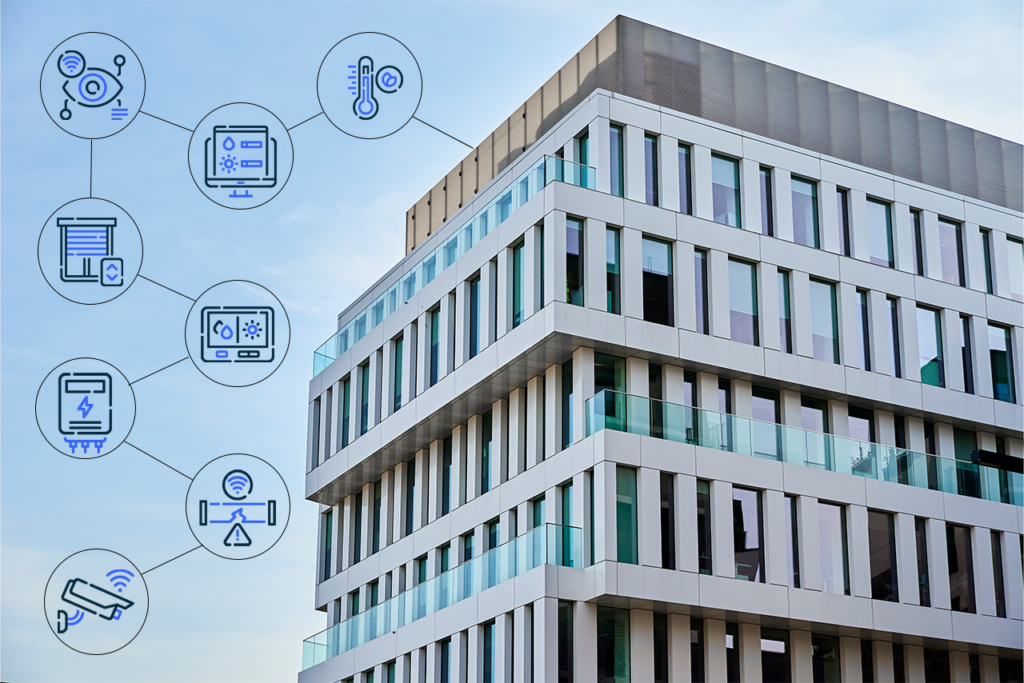
In today’s context, where sustainability is becoming a major priority for real estate developers, monitoring systems are essential for improving building performance and reducing environmental impact. These solutions, ranging from simple applications to complex systems like Building Management Systems (BMS) or Building Automation Systems (BAS), enable efficient resource management and contribute to carbon emissions reduction, supporting the decarbonization goals.
Simple monitoring: quick and efficient solutions
Simple monitoring systems are easy to implement and target specific aspects, such as water consumption, electricity usage, or leak detection. For example, by monitoring energy consumption, areas with excessive usage can be quickly identified, and necessary adjustments can significantly reduce operational costs. These applications are an important first step in supporting performance monitoring and resource optimization.
Complex systems: centralized control for optimized performance
For more comprehensive management, BMS and BAS allow the integration of data from multiple sources and monitor all critical systems of the building. These centralized systems enable real-time adjustments, thus contributing to cost reduction and smaller carbon emissions values. The integration of collected data helps develop effective ESG strategies, which are essential in the decarbonization process. They also play an important role in the strategies for international sustainability standards, such as BREEAM and LEED certifications.
THE POWER OF DATA: from information to strategy
Monitoring is not just about collecting raw data; it’s also about transforming it into concrete actions. Consulting companies, like BuildGreen, are essential in interpreting the data, offering services such as energy audit, commissioning, and sustainability and ESG consulting. They help identify areas where the building is not in optimal performance and propose corrective measures to improve efficiency. Additionally, data about consumption and carbon emissions can be integrated into net zero strategies, contributing to reducing environmental impact.
Benefits for projects and society
- Cost reduction
Constant monitoring of resources allows managers to implement optimization measures, generating significant savings and improving the quality of services offered. - Alignment with international standards
Monitoring systems are essential for obtaining high levels of BREEAM, LEED, and other sustainability certifications. These systems support efforts to achieve carbon neutrality and improve the project’s position in the market benchmarks. - Safety and protection
Leak detection systems and centralized control ensure quick interventions in case of emergencies, protecting both the building and its occupants. - Support for ESG
The data collected helps develop robust strategies for reducing Scope 1, Scope 2, and Scope 3 emissions, thus contributing to achieving sustainability goals and environmental protection.
Monitoring systems are crucial in transforming buildings towards more sustainable and efficient directions. From simple applications to complex BMS/BAS solutions, these technologies contribute to optimal resource management and support sustainability, carbon neutrality, and ESG goals. Collaborating with industry experts, such as BuildGreen, allows developers to improve performance, reduce costs, and support the transition to a greener and more sustainable future.

